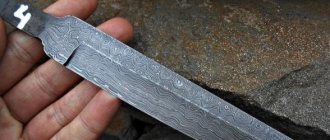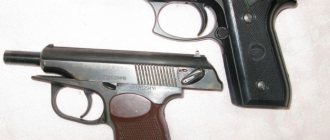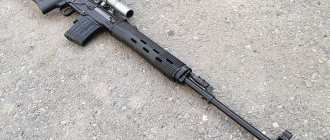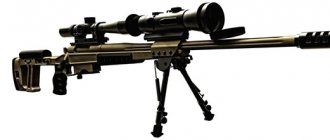Alloy AMg6l (AL23) Alloy AMg6lch (AL23-1) Alloy AMg5Mts (AL28) Alloy AMg5K (AL13) Alloy AMg4K1.5M (AMg4K1.5M1) Alloy AMg11 (AL22) Alloy AMg10ch (AL27-1) Alloy AMg10 (AL27) Alloy AM5 (AL19) Alloy AM4.5Kd (VAL10) Alloy AL8 Alloy AL7 Alloy AL6 Alloy AL4MS Alloy AL4MK Alloy AL4M Alloy AL18 (AL18V) Alloy AMg7 (AL29) Alloy AMO7-3 Alloy ATs4Mg (AL24) Alloy ATSRIV Alloy V124 Alloy V2616 Alloy VAL10 Alloy VAL11 Alloy VAL12 Alloy VAL14 Alloy VAL16 Alloy VAL18 Alloy ZhLS Alloy KS740 Alloy KS741 Alloy AK7 Alloy AK10M2N Alloy AK10Su Alloy AK12 (AL2) Alloy AK12M2 (AK11M2) Alloy AK12M2MgN (AL25) Alloy AK12MMgN (AL30 ) Alloy AK13 Alloy AK18 Alloy AK21M2.5N2, 5 (VKZhLS-2) Alloy AK5M (AL5) Alloy AK5M2 Alloy AK5M4 Alloy AK5M7 Alloy AK5Mch (AL5-1) Alloy AK6M2 Alloy AL21 Alloy AK7M2 Alloy AK7pch (AL9-1) Alloy AK7Ts9 (AL11) Alloy AK7ch (AL9) Alloy AK8l ( AL34) Alloy AK8M (AL32) Alloy AK8M3 Alloy AK8M3ch (VAL8) Alloy AK9 (AL4V) Alloy AK9M2 Alloy AK9pch (AL4-1) Alloy AK9s Alloy AK9Ts6 (AK9Ts6r) Alloy AK9ch (AL4) Alloy AL1
Designations
| Name | Meaning |
| Designation GOST Cyrillic | AK12 |
| Designation GOST Latin | AK12 |
| Translit | AK12 |
| By chemical elements | — |
| Name | Meaning |
| Designation GOST Cyrillic | AL2 |
| Designation GOST Latin | AL2 |
| Translit | AL2 |
| By chemical elements | — |
Foundry and technological properties
AK12 billets stand out among other aluminum billets by their low casting shrinkage of 0.8%, high fluidity in the liquid state and low density. In addition, this material does not crack during casting. However, the short-term strength limit of this silumin is lower, so the range of its application is limited to parts operating under light load.
Castings from AK12 are produced with minimal casting shrinkage, they have good density and high tightness. The strength of parts does not fluctuate significantly downward when casting thick-walled products. Corrosion resistance in ordinary water and atmosphere is good. AK12 weldability is without restrictions by argon-arc or spot welding, with sufficient qualification of the welder. We will talk in more detail about the use of this material below.
Description
AK12 alloy is used : for the production of ingots and castings using various casting methods (sand molds, lost wax, die casting, injection molding); castings of parts of mining and metallurgical equipment; castings of metallurgical equipment parts (thin-walled openwork casting of instrument parts, pump housings and other parts with increased tightness, operating at temperatures not exceeding +200 ° C); castings of parts of pipeline fittings and drive devices for them; castings of complex configuration, including large ones, operating at low and medium loads and pressures, not exposed to temperatures above 150 °C.
Note
Aluminum casting alloy of the Al-Si-Mg system. A thermally non-hardening alloy with low strength properties, satisfactory corrosion resistance in air, fresh water, oil and fuel, and reduced resistance in sea water. has high casting properties (high fluidity, fillability and tightness, low casting shrinkage, not prone to the formation of hot cracks). To increase strength and ductility, the alloy is modified. Tends to form large gas porosity. The alloy has worse cutting machinability compared to other aluminum alloys. The alloy is not recommended for producing parts that require increased surface cleanliness after machining.
Properties of silumin AK12.
Silumin brand AK12 has a low density, since it contains light silicon - the density is 2.66 g/cm3. It has important properties that are difficult to obtain from more durable aluminum alloys:
- high fluidity;
- low linear shrinkage;
- excellent weldability.
AK12 alloy exhibits low shrinkage during the casting process and practically does not form cracks. At the same time, castings, due to its small crystallization interval (close to zero), have low porosity. But due to the tendency of the aluminum-silicon alloy to gas saturation, products may contain concentrated gas shells - closed open ones or cavities with a rough surface. It is because of them that considerable difficulties arise in the manufacture of massive and complex-shaped blanks from AK12.
Corrosion resistance is the second after casting qualities, but no less important parameter of the AK12 alloy. In general, it has an average level of anti-corrosion, so it can be used in industry without a protective coating or with a layer of paint applied to its surface. The corrosion rate of silumin AK12 in sea and humid air largely depends on its composition.
AK12 alloy is excellent at welding with any type of welding, both argon and spot, giving a fairly strong weld seam.
Chemical composition
| Standard | Mn | Si | Fe | Cu | Al | Ti | Zn | Zr | Mg |
| GOST 1583-93 | ≤0.5 | 10-13 | ≤0.7 | ≤0.6 | Remainder | ≤0.1 | ≤0.3 | ≤0.1 | ≤0.1 |
| OST 24.916.01-71 | ≤0.5 | 10-13 | ≤0.8 | ≤0.6 | Remainder | — | ≤0.3 | — | ≤0.1 |
| KSt 81-033:2009 | ≤0.5 | 10-13 | — | ≤0.6 | Remainder | ≤0.1 | ≤0.3 | ≤0.1 | ≤0.1 |
Al is the base. According to GOST 1583-93, the iron content is indicated for sand casting and investment casting. Iron content when casting in chill mold ≤ 1.0%, when casting under pressure ≤ 1.50%. The amount of impurities taken into account should be for sand casting and investment casting ≤ 2.10%, chill casting ≤ 2.20%, and pressure casting ≤ 2.70%. According to KSt 81-033:2009, the total content of Zr+Ni ≤ 0.12%. According to OST 24.916.01-71, the iron content is indicated for sand casting and lost wax models. Iron content when casting in chill mold ≤ 1.0%, when casting under pressure ≤ 1.50%. The amount of impurities taken into account should be for sand casting and investment casting ≤ 2.30%, chill casting ≤ 2.20%, and pressure casting ≤ 2.80%. When using the alloy for the manufacture of parts operating in a marine environment, the copper content should not exceed 0.30%.
Alloy characteristics
In various fields of industry, along with high-strength alloys based on ferrous metals (steel, cast iron), lightweight compounds based on aluminum and silicon - silumins - are widely used. They are distinguished by greater strength and wear resistance in comparison with pure aluminum, but are somewhat inferior to aluminum-copper compounds.
One of the most common aluminum-silicon alloys is AK12. It belongs to the foundry category.
According to the outdated classification, it was marked with the letters AL - cast aluminum.
AK12 can be divided into three groups according to its properties:
Physical
- specific heat capacity – 838 J/(kg*deg);
- elastic modulus – 0.7 MPa;
- density – 2650 kg/m3;
- coefficient of thermal expansion – 21.1 1/C;
- specific electrical resistance – 54.8 Ohm*m.
Mechanical
- Brinell hardness – НВ 10-1=50 MPa;
- temporary tensile strength when casting in a chill mold or under pressure - 147-157 MPa;
- relative elongation when casting in a chill mold – 2-3%;
- relative elongation during injection molding is 1-2%.
Foundry-technological
- linear shrinkage coefficient – 0.8%.
Silumin is hermetically sealed and very resistant to corrosion. For the AK12 alloy used in sea water, the proportion of copper in accordance with the requirements of the standard should not exceed 0.3%. The alloy also exhibits excellent anti-corrosion properties in other environments:
- slightly acidic;
- alkaline;
- in high humidity conditions.
The negative properties of the AK12 alloy include the following: - brittleness during machining.
- high porosity;
- coarse-grained eutectic structure of castings;
- low threshold for physical activity.
It is impossible to achieve an increase in strength by heat treatment (hardening) of alloy castings.
Mechanical characteristics
| σB, MPa | d10 | Brinell hardness, MPa |
| Castings are in delivery condition. No heat treatment | ||
| ≥147 | ≥4 | ≥50 |
| ≥157 | ≥2 | ≥50 |
| ≥157 | ≥1 | ≥50 |
| Sand castings, lost wax castings, modified alloy die castings as delivered. No heat treatment | ||
| ≥147 | ≥4 | ≥50 |
| Sand castings, lost wax castings, and modified alloy molds. Mode T2: Annealing at 290-310 °C, holding time 2-4 hours | ||
| ≥137 | ≥4 | ≥50 |
| Castings are in delivery condition. Mode T2: Annealing at 290-310 °C, holding time 2-4 hours | ||
| ≥147 | ≥3 | ≥50 |
| ≥147 | ≥2 | ≥50 |
Alloy modification.
Unfortunately, thermal hardening of the AK12 alloy does not lead to an increase in its strength characteristics. In this regard, its mechanical properties are modified with special additives. To do this, the aluminum-silicon alloy is melted to a liquid state and treated with alkali metals (sodium, lithium, potassium) or their salts. A little modifier is required, literally hundredths of a percent, so that it binds the silicon particles in the solution and inhibits their growth. As a result, the strength and ductility of the AK12 alloy, as well as its casting properties, are significantly increased.
Recently, the industry has been actively using the aluminum-silicon alloy AK12, modified with strontium compounds, which have almost the same effect on the alloy as alkali metal salts. They are introduced in the form of an aluminum-based alloy, and, unlike sodium, strontium is not prone to waste and does not increase the gas-shrinkage and shrinkage porosity of the material. Castings obtained with its help retain their modified properties even after remelting.
AK12 Chelyabinsk
| Brand: | AK12 (other designation AL2) |
| Classification: | Aluminum casting alloy |
| Application: | An alloy based on the aluminum-silicon-magnesium system (silumin). The alloy is used to produce dense, hermetic castings of complex shapes that do not experience significant loads during operation; the alloy is highly hermetic. |
| Foreign analogues: | Known |
Chemical composition in % of AK12 material
GOST 1583-93
| Fe | Si | Mn | Ti | Al | Cu | Zr | Mg | Zn | Impurities |
| up to 1.5 | 10- 13 | up to 0.5 | up to 0.1 | 84.3- 90 | up to 0.6 | up to 0.1 | up to 0.1 | up to 0.3 | total 2.7 |
Note: Al
is the base.
Al
percentage is given approximately
| Note: When using the alloy for parts operating in sea water, the mass fraction of copper should not exceed 0.30% |
Foundry and technological properties of the AK12 material.
| Linear shrinkage: | 0.8 % |
Mechanical properties at T=20oC of AK12 material.
| Assortment | Size | Eg. | sв | sT | d5 | y | KCU | Thermal change |
| — | mm | — | MPa | MPa | % | % | kJ/m2 | — |
| chill casting, GOST 1583-93 | 147-157 | 2-3 | ||||||
| injection molding, GOST 1583-93 | 147-157 | 1-2 |
| Hardness AK12, GOST 1583-93 | HB 10 -1 = 50 MPa |
Physical properties of the AK12 material.
| T | E 10- 5 | a 10 6 | l | r | C | R 10 9 |
| hail | MPa | 1/Grad | W/(m deg) | kg/m3 | J/(kg deg) | Ohm m |
| 20 | 0.7 | 2650 | 54.8 | |||
| 100 | 21.1 | 168 | 838 |
Foreign analogues of AK12 material
Attention!
Both exact and closest analogues are indicated. G-AlSi11
| USA | Germany | Japan | France | England | European Union | Italy | China | Sweden | Poland | Czech | Austria | Inter |
| — | DIN,WNr | JIS | AFNOR | B.S. | EN | UNI | G.B. | SS | PN | CSN | ONORM | ISO |
A04130
| ||||||||||||
| G-AlSi12 | ||||||||||||
| GK-AlSi12g |
| A-S13 |
| LM20 |
| ENAC-AlSi12(a) |
| ZL102 |
| ZL7 |
| AlSi12(a) |
Designations:
| Mechanical properties : | |
| sв | -Short-term strength limit, [MPa] |
| sT | - Proportional limit (yield strength for permanent deformation), [MPa] |
| d5 | -Elongation at break, [%] |
| y | -Relative narrowing, [%] |
| KCU | -Impact strength, [kJ/m2] |
| HB | -Brinell hardness, [MPa] |
| Physical properties: | |
| T | -Temperature at which these properties were obtained, [Deg] |
| E | -Elastic modulus of the first kind, [MPa] |
| a | -Coefficient of thermal (linear) expansion (range 20o-T), [1/degree] |
| l | -Thermal conductivity coefficient (heat capacity of the material), [W/(m deg)] |
| r | -Material density, [kg/m3] |
| C | -Specific heat capacity of the material (range 20o-T), [J/(kg deg)] |
| R | -Specific electrical resistivity, [Ohm m] |
AK12-Aluminum casting alloy AK12-chemical composition, mechanical, physical and technological properties, density, hardness, application
Affordable metal products
Aluminum ingot
Operational features of AK12
It is worth noting that parts made of this alloy are not intended to function in sea water. The reason for this is the high copper content in its composition. The Cu content of AK12 is about 0.6%, and for use in seawater only aluminum alloys with a copper content below 0.3% are used. Therefore, AK12 is not recommended for these purposes.
As for the operating temperature, many silumins belong to forging and heat-resistant alloys, but AK12 occupies a special niche among other silumins. It can also be used for forging, but parts made from it cannot be used at temperatures above 200 °C. Beyond this temperature, the alloy will begin to lose its corrosion resistance and strength. These changes are irreversible.
Material AK12 Chelyabinsk
Not a single production can operate without steel, be it heavy engineering or the manufacture of household electrical appliances. There are many brands of this product, as well as a large number of dispensing forms. Our company sells AK12 material in large quantities and with a minimal margin. To clarify the properties and characteristics of a particular brand, you can contact the company’s managers.
Like all products, AK12 material is purchased from leading manufacturers. Therefore, we are ready to provide a quality guarantee with full responsibility. The minimum number of intermediaries determines the low cost. Coupled with fast delivery, this enables our business partners to conduct stable and mutually beneficial cooperation.
In addition to tempering, in the form of one or another part (blank), our company carries out metal processing. All events undergo strict control for compliance with GOST and rules. The specialists of our company carry out such work as galvanizing, creating parts according to customer drawings, producing castings, manufacturing various profiles and much more.
Having the latest equipment and vast experience in our arsenal, we can offer product testing for a number of parameters, such as strength characteristics, chemical composition, alloy purity, and so on.
Each buyer is offered a huge range of products in various formats, as well as current services and works. To quickly understand and choose a product that meets your needs, you need to contact the company manager and receive detailed information on all issues of interest.
description, chemical composition. Where is AL9 used?
Nowadays, great attention is paid to aluminum alloys, since modern industry has no analogues to these lightweight, fairly strong and well-processed materials. Of course, the advantages of aluminum include its high corrosion resistance, ductility, and low melting point.
According to GOST 2685-75, all existing aluminum alloys are classified into groups:
- Group I – AL2, 4, 9 (silumins, i.e. alloys of aluminum with silicon (up to 13% in composition))
- Group II – AL3, 5, 6, 32 (main additives – silicon and copper)
- Group III – AL7, 19 (main additive – copper)
- Group IV – AL8, 13, 22 (additive – magnesium)
- Group V – AL1, 11, 21, AK21M2, 5N25 (alloys with complex chemical composition)
AL9 alloy: description
The main advantage of aluminum casting alloy AL9 is its high tightness. This is quite a significant quality for a material that is used for the production of shaped castings. The linear shrinkage that AL-9 gives is only 1%. Mg is included in the composition of this alloy for strengthening, since it forms a strengthening phase with silicon - Mg2Si.
About the chemical composition of the alloy
In percentage terms, the set of chemical elements in this alloy looks like this:
- Al – 89.6-93.8%
- Si – 6-8%
- Fe – no more than 1.5%
- Mn – no more than 0.5%
- Mg – 0.2 – 0.4%
- Zn – no more than 0.3%
- Cu – no more than 0.2%
- Be – no more than 0.1%
- Pb – no more than 0.05%
- Sn – no more than 0.01%
Mechanical and physical properties of AL9 alloy
AL9 is endowed with the following properties:
You can compare the main parameters of AL9 with those of other aluminum alloys in this table:
Like all aluminum-based alloys, the brand we are considering is characterized by relatively low hardness: HB 10-1=70MPa.
AL9: application
Alloy AL9 (as well as AL9V) is used in the production of cast parts that have a complex configuration and subsequently experience static loads. The use of AL9 is due to the requirements for increased tightness of the product, its excellent weldability and increased corrosion resistance. Practice shows that AL 9 alloy is suitable for injection molding and in-ground casting. The only limitation can be considered the temperature operating conditions of parts made of this grade of aluminum: they can operate at temperatures up to 200°C.
fx-commodities.ru
Products made from silumin AK12
Due to its good fluidity, tightness, and corrosion resistance, this material is recommended for casting parts of equipment, equipment, and devices of complex shape. However, the fragility of this alloy does not allow it to be used for casting critical parts operating under load.
AK12 is used for casting parts in chill molds, sand molds, under pressure, according to models, in molds in the form of shells. Pump housings, engine parts, equipment and household appliances are made from it. In other matters, food products are also produced from silumin of this high-purity brand, but only with special permission: cauldrons, pots, etc. It can also be used in weapons manufacturing.










